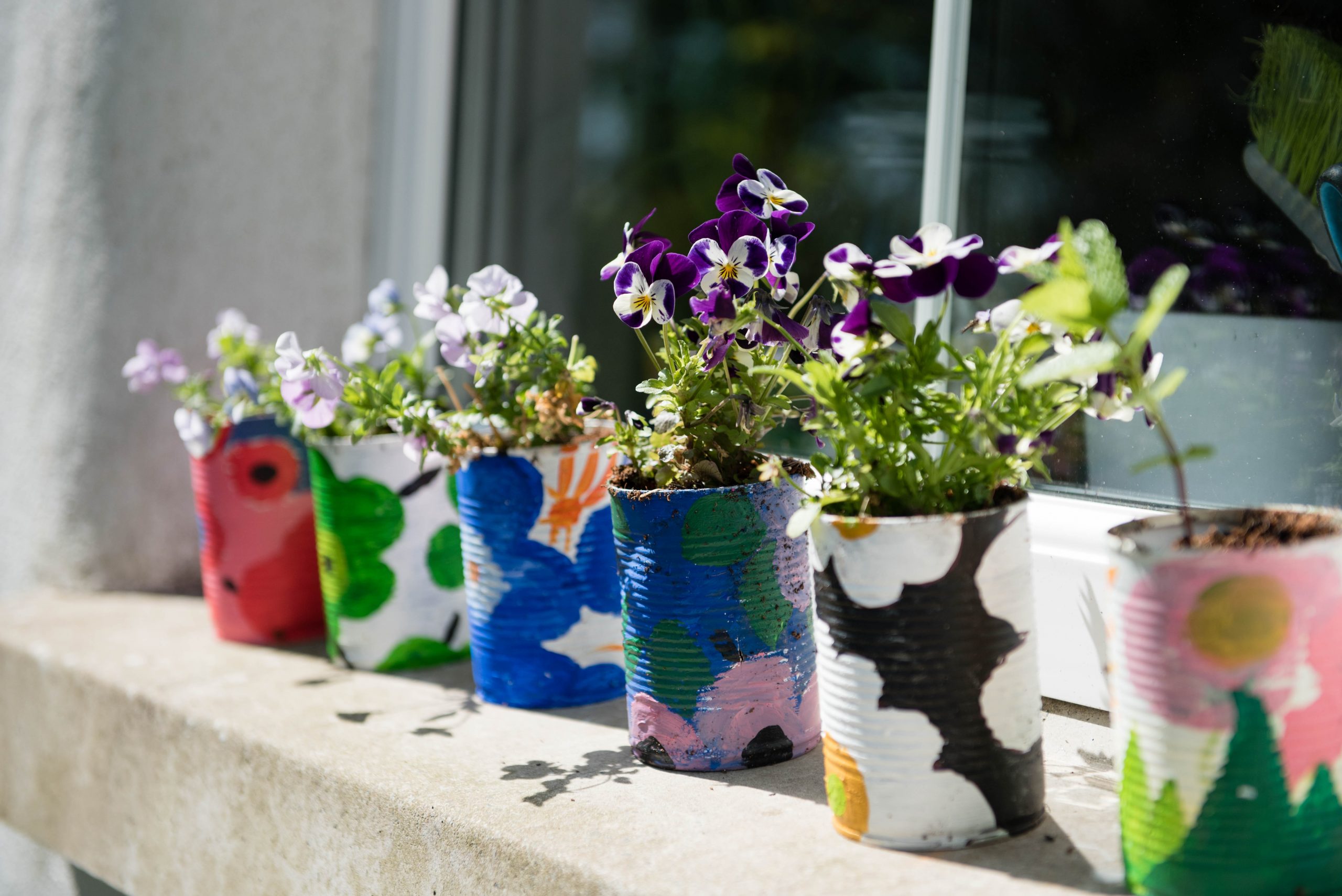What is upcycling? Definition and examples
Upcycling is a form of recycling that creates higher-value products from items that would otherwise go to waste. To upcycle is to give new life to discarded objects. Upcycled objects include everyday items such as furniture, china, and glassware.
By tapping into the potential of items that would typically be overlooked, upcycling fosters a culture of innovation and resourcefulness in design.
Upcycled items often have a different use and purpose than their previous form. An example of this might be to re-purpose tin cans into pencil holders or flower pots.

With paint and imagination, you can upcycle tin cans into colorful plant pots.
Image: Julietta Watson on Unsplash
Merriam-Webster notes that the distinguishing feature of an upcycled object is that it is “of a higher value than the original item.” They also suggest that the term first came into use in 1994.
What is unique about upcycling?
Recycling and upcycling are both similar and different. A similarity is that both are about reusing waste. However, people generally associate recycling with the breakdown of waste into materials that go to make new – generally low-value – products.
Although a form of recycling, upcycling is different in that it does not involve breaking down the discarded item.
Take the example of newspaper. If you dispose of your unwanted newspaper in the recycling bin, it will end up in a process that breaks it down.
The waste paper recycling process includes shredding, pulping, spraying, and drying. It creates reusable, low-grade paper. Manufacturers use the material to make cardboard containers, tissue paper, toilet rolls, and other products.
However, if you make biodegradable plant pots out of your newspaper, you are upcycling it. The end product has a different use and the material’s composition remains unaltered. In addition, repurposing the discarded newspaper also gives it greater, more lasting, value.
Similarly, upcycling is not the same as DIY jobs such as renovating and refurbishing, because those activities keep the object’s original purpose.
Creative examples of upcycled objects
Another common feature of upcycling is that many people regard it as a creative activity. It takes imagination to fashion a product with a completely different use. Here are some examples:
- Transform chandelier parts into earrings, necklaces, and other types of jewelry.
- Make light fittings out of coat hangers, paper clips, bicycle parts, and old CDs.
- Use sheets of newspaper to make simple pots for growing seeds.
- Create a garden swing out of a broken chair.
- Turn discarded bottle tops into tea lights, or old ladders into bookshelves.
However, some might question whether the term has become so trendy that there is a danger of drifting from the original intention.
Buying 1,000 new plastic spoons to make an unusual, albeit creative, desk lamp is not upcycling. Creating a lamp out of discarded plastic spoons retrieved from dumpsters, on the other hand, is.
Upcycling not only reduces waste but also encourages sustainable consumption by demonstrating how materials can be repurposed into valuable and artistic items without the need for further manufacturing.
“Upcycling,” vocabulary and concepts
There are many compound phrase related to the concept of “upcycling.” They emphasize different aspects and applications of upcycling. A compound phrase is a term that consists of two or more words.
Let’s have a look at some of them, what they mean, and how we can use them in a sentence:
-
Upcycling Initiative
A project or movement aimed at promoting upcycling practices.
Example: “The city’s new upcycling initiative encourages residents to repurpose household items instead of discarding them.”
-
Upcycling Workshop
A class or session where participants learn how to upcycle various materials.
Example: “She attended an upcycling workshop to learn how to turn old jeans into stylish tote bags.”
-
Upcycling Techniques
Methods or processes used in transforming waste materials into new products.
Example: “The artist shared several upcycling techniques during the sustainability fair.”
-
Upcycling Artist
An artist who specializes in creating new pieces of art from discarded materials.
Example: “The upcycling artist’s gallery featured sculptures made from reclaimed metal.”
-
Upcycling Trend
The growing popularity and practice of upcycling in society.
Example: “The upcycling trend has gained momentum as people become more environmentally conscious.”
-
Upcycling Community
A group of individuals who share an interest in or commitment to upcycling activities.
Example: “She found a supportive upcycling community online where she could share ideas and resources.”
Two Educational Videos
The educational videos featured on our partner YouTube channel, Marketing Business Network, explain the meanings of ‘Upcycling’ and ‘Recycling,’ utilizing easy-to-understand language and and examples.
-
What is Upcycling?
-
What is Recycling?

